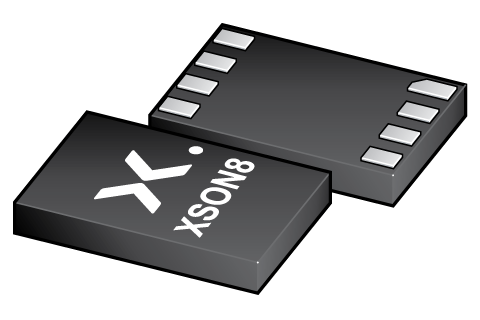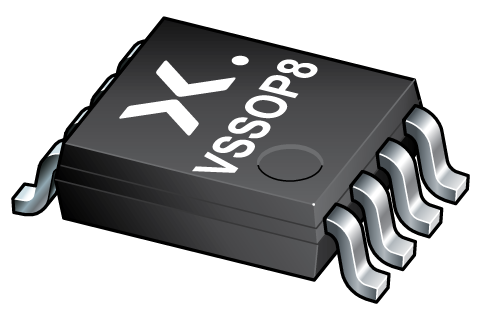
Register once, drag and drop ECAD models into your CAD tool and speed up your design.
Click here for more information74HC3G14GD
Triple inverting Schmitt trigger
The 74HC3G14; 74HCT3G14 is a triple inverter with Schmitt-trigger inputs. Inputs include clamp diodes. This enables the use of current limiting resistors to interface inputs to voltages in excess of VCC. Schmitt trigger inputs transform slowly changing input signals into sharply defined jitter-free output signals.
Alternatives
Features and benefits
Wide supply voltage range from 2.0 V to 6.0 V
Input levels:
For 74HC3G14: CMOS level
For 74HCT3G14: TTL level
CMOS low power dissipation
High noise immunity
Unlimited input rise and fall times
Latch-up performance exceeds 100 mA per JESD 78 Class II Level B
Complies with JEDEC standards:
JESD8C (2.7 V to 3.6 V)
JESD7A (2.0 V to 6.0 V)
ESD protection:
HBM: ANSI/ESDA/JEDEC JS-001 class 2 exceeds 2000 V
CDM: ANSI/ESDA/JEDEC JS-002 class C3 exceeds 1000 V
Specified from -40 °C to +85 °C and -40 °C to +125 °C
Applications
Wave and pulse shaper for highly noisy environments
Astable multivibrators
Monostable multivibrators
Parametrics
| Type number | Package name |
|---|---|
| 74HC3G14GD | XSON8 |
Documentation (4)
| File name | Title | Type | Date |
|---|---|---|---|
| 74HC_HCT3G14 | Triple inverting Schmitt trigger | Data sheet | 2023-12-18 |
| AN11044 | Pin FMEA 74HC/74HCT family | Application note | 2019-01-09 |
| Nexperia_package_poster | Nexperia package poster | Leaflet | 2020-05-15 |
| SOT996-2 | plastic, leadless extremely thin small outline package; 8 terminals; 0.5 mm pitch; 3 mm x 2 mm x 0.5 mm body | Package information | 2020-04-21 |
Support
If you are in need of design/technical support, let us know and fill in the answer form we'll get back to you shortly.
Longevity
The Nexperia Longevity Program is aimed to provide our customers information from time to time about the expected time that our products can be ordered. The NLP is reviewed and updated regularly by our Executive Management Team. View our longevity program here.
Models
No documents available
How does it work?
The interactive datasheets are based on the Nexperia MOSFET precision electrothermal models. With our interactive datasheets you can simply specify your own conditions interactively. Start by changing the values of the conditions. You can do this by using the sliders in the condition fields. By dragging the sliders you will see how the MOSFET will perform at the new conditions set.
